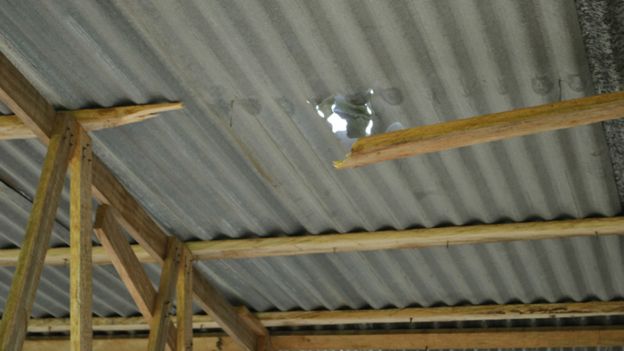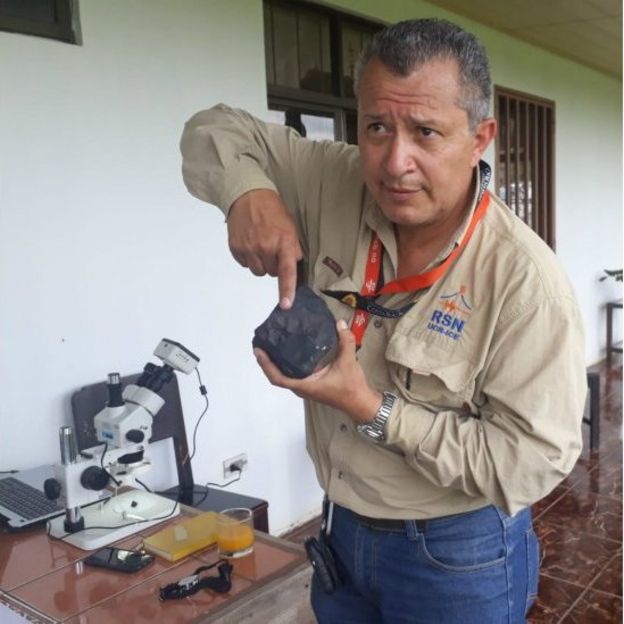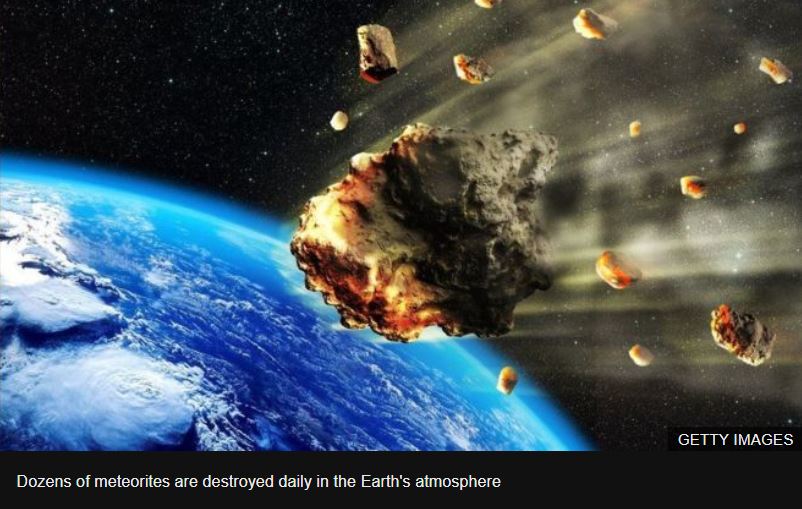The event alarmed thousands in Costa Rica. At nine o’clock at night on April 23, 2019, the sky lit up and a strong explosion was felt.
Seconds later, hundreds of small rocks fell to Earth. At that hour Marcia Campos Muñoz was resting in her house when she heard a series of blows on the roof of her house.

The noise and howling of her dog startled her. But the fright was increased by the loud bang in the back of her house. As she checked, she found a hot rock on the floor with an intense smell of cooking gas.
Marcia lives in the community La Caporal de Aguas Zarcas in San Carlos County, located 57 kilometers north of the capital of Costa Rica.
And what he experienced was the fall of a meteorite that according to specialists was the size of a washing machine, although it broke up when it entered the Earth’s atmosphere.
The fragments literally bombed Marcia’s property and pierced the roof of her house.

“The lady had her house stoned from the sky, literally,” Gerardo Soto Bonilla, a researcher at the Central American School of Geology (ECG) at the University of Costa Rica, tells BBC Mundo.
Invaluable treasure
Space rock fall is a common occurrence. In fact, dozens arrive on Earth every day. Most are destroyed before they reach the surface.
Image copyright Central American School of GeologyImage caption The meteorite pierced the roof of Marcia Campos’ house
But not this one, now the object has become a valuable treasure for scientists.
The meteorite contains elements similar to those that existed when the solar system was formed and in addition part of its composition is of organic origin.
Rocks like this fell to Earth billions of years ago and according to some specialists may be one of the keys to the emergence of life on the planet.
That’s why the importance of the meteorite from Aguas Zarcas, named after the area where it fell.
The fragments were recovered by community members and specialists from the Central American School of Geology. The virtual hunt made it possible to gather about 27 kilograms of rock fragments.
Formed in the stars
The largest fragment recovered weighs 1,800 grams, but its greatest value is the information it contains.
Image copyright Central American School of GeologyImage caption Scientific information about the meteorite is invaluable, says Gerardo Soto
The meteorite that fell in Aguas Zarcas is a carbonaceous chondrichthyum, a very rare variety of high scientific value.
In fact, in the history of geology only 504 of these types of rocks have been recovered, according to the researcher from the University of Costa Rica.
Carbonaceous chondrites contain the only record of the geochemical composition of the early years of the solar system.
Analysis of the fragments recovered in Costa Rica revealed organic carbon components, but which are of inorganic origin.
It is a process that goes back to the first moments in the formation of the solar system, says researcher Soto Bonilla.
“The original carbon was formed from nuclear fusion in the stars, the origin is totally inorganic,” he explains.
Image copyright Central American School of GeologyImage caption The largest fragment weighs 1,800 grams
When analyzing the fragments, minerals were also found that contained water in their molecular structure, as well as other components such as nickel sulfide.
Another discovery was that the general composition of the rock contains oxygen isotopes very similar to those that exist in the Sun.
The key to life
Carbonaceous chondrichthyans are considered to be fundamental for studying the age and composition of the solar system.
Rocks like the one found in Aguas Zarcas are rich in carbon, but also contain organic molecules such as amino acids which are one of the basic components of proteins.
A key element was stellar carbon. “Because it has a very high ability to associate with other elements it led it to mix with other elements.”
Some of them were oxygen, nitrogen and hydrogen, for example. The chemical reaction “began to form the molecules that give rise to what living beings are.
Getty ImagesImage caption The components of the meteorite could explain the emergence of life on Earth
A process that, over millions of years, allowed for the emergence of life on Earth.
In fact, according to the ECG, the meteorite from Aguas Zarcas may be close to 4.56 billion years old.
“It’s cool.”
There is another element that increases the scientific value of the bolide: the moment it fell to Earth and the speed with which the fragments were recovered.
Carbonaceous chondrichthyans that fell tens or hundreds of years ago, when they were recovered, lost most of their organic components.
One example is the Murchinson meteorite that landed in Australia in 1969 and was considered one of the greatest discoveries in the history of the solar system.
The rock, however, was manipulated at various times and its components were contaminated with those of the Earth, or lost over the years.
Image copyright ReutersImage caption The first microbes appeared hundreds of millions of years ago
In addition, explains Soto Bonilla, the technology at that time did not allow for the complete analysis of organic particles, something that is possible today.
In the case of the bolide that fell in Costa Rica, there is ample opportunity to make the most of the information it contains.
“It’s cool, it just fell,” says the ECG researcher. “It gives us the opportunity to analyze those components that come pristine from the solar system because when it enters the Earth it has very little change”.
The organic components created billions of years ago are almost completely preserved. “That’s where the importance of the Aguas Zarcas meteorite comes from.”
Related posts:
